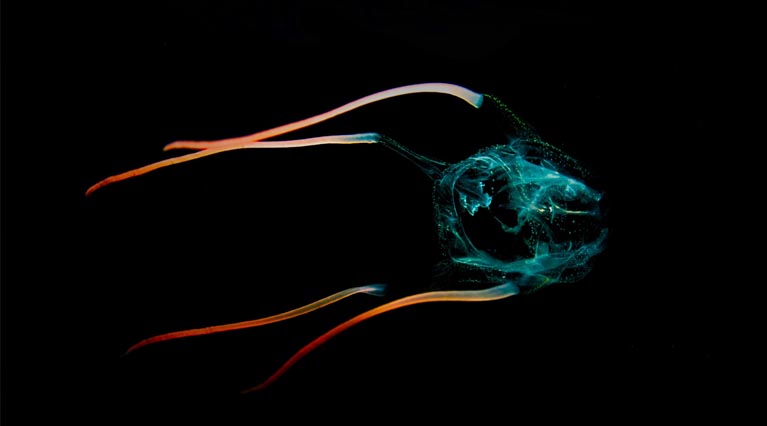Last modified on July 23rd, 2020 at 3:19 am
How Dangerous Are Box Jellyfish
Risks Box Jellyfish Pose To Humans
In spite of the fact that the box jellyfish has been called “the world’s most venomous creature”, just a couple of animal groups in the class have caused human fatalities, and a few species represent no genuine danger by any stretch of the imagination. For instance, the sting of Chiropsella bart results in brief tingling and gentle pain.
Fatalities in Australia
In Australia, fatalities are regularly executed by the largest types of this class of jellyfish, Chironex fleckeri. Angel Yanagihara of the University of Hawaii’s Department of Tropical Medicine found the venom causes cells to become porous and allow for potassium leakage, bringing on hyperkalemia, which can prompt cardiovascular collapse and death as fast as inside 2 to 5 minutes. She hypothesized that a zinc compound might be produced as an antidote.
In Australia, C. fleckeri has brought about no less than 64 deaths since the initial report in 1883, yet even in this species most encounters result in only a small amount of venom being released. Most recent fatalities in Australia have been children, which is connected to their smaller body mass. In parts of the Malay Archipelago, the quantity of deadly cases is far higher (in the Philippines alone, an expected 20-40 die yearly from Chirodropid stings), likely because of restricted access to hospitals and anti-venom.
Other Fatalities
The more recently discovered and similarly deadly Chironex yamaguchii may be just as dangerous, as it has been responsible for a few deaths in Japan. It is unclear which of these species is the one typically responsible for fatalities in the Malay Archipelago. In 1990, a 4-year-old died after being stung by Chiropsalmus quadrumanus at Galveston Island in the Gulf of Mexico, and either this species or Chiropsoides buitendijki is viewed as the presumable culprit.
Warning signs and medical aid stations have been erected in Thailand after the death of a 5-year-old French boy in August 2014. A woman passed on in July 2015 in the wake of being stung off Koh Phangan, and another at Lamai Beach at Ko Samui on 6 October 2015. At least two passings in Australia have been attributed to the thumbnail-sized Irukandji jellyfish.
Those who succumb to these may endure extreme physical and mental side effects, known as Irukandji syndrome. Nevertheless, most victims do survive, and out of 62 individuals treated for Irukandji envenomation in Australia in 1996, half could be released home with few or no side effects following 6 hours, and just two remained hospitalized roughly a day after they were stung.
Box jellyfish are known as the “suckerpunch” of the ocean not just on the grounds that their sting is rarely noticed until the venom is infused due to the fact that they are practically translucent.
I have been a nature enthusiast since I was a small girl. My background is in online marketing and website development. It only makes sense to merge my love for nature with my skills in online marketing to help spread awareness, and appreciation for Our Beautiful Planet.




